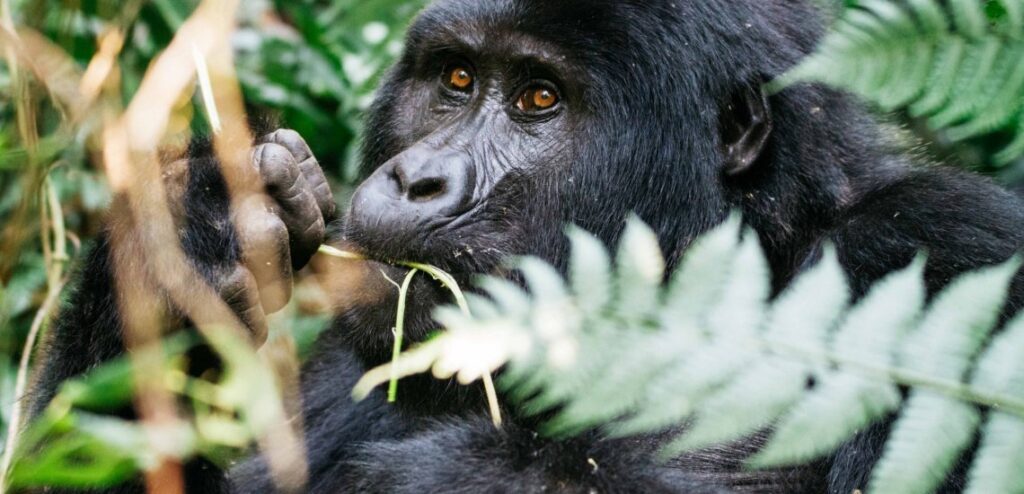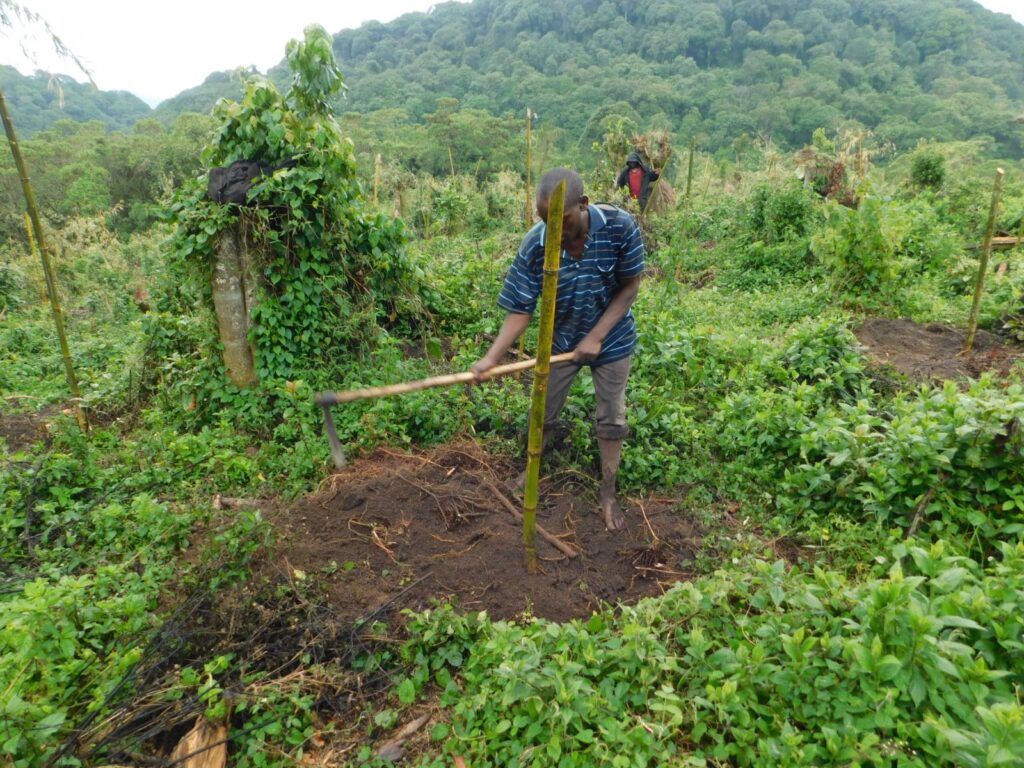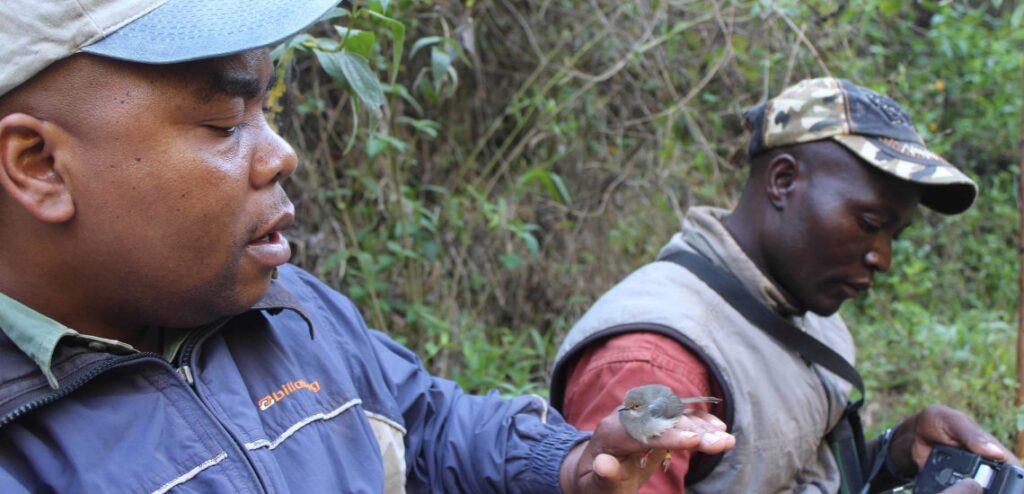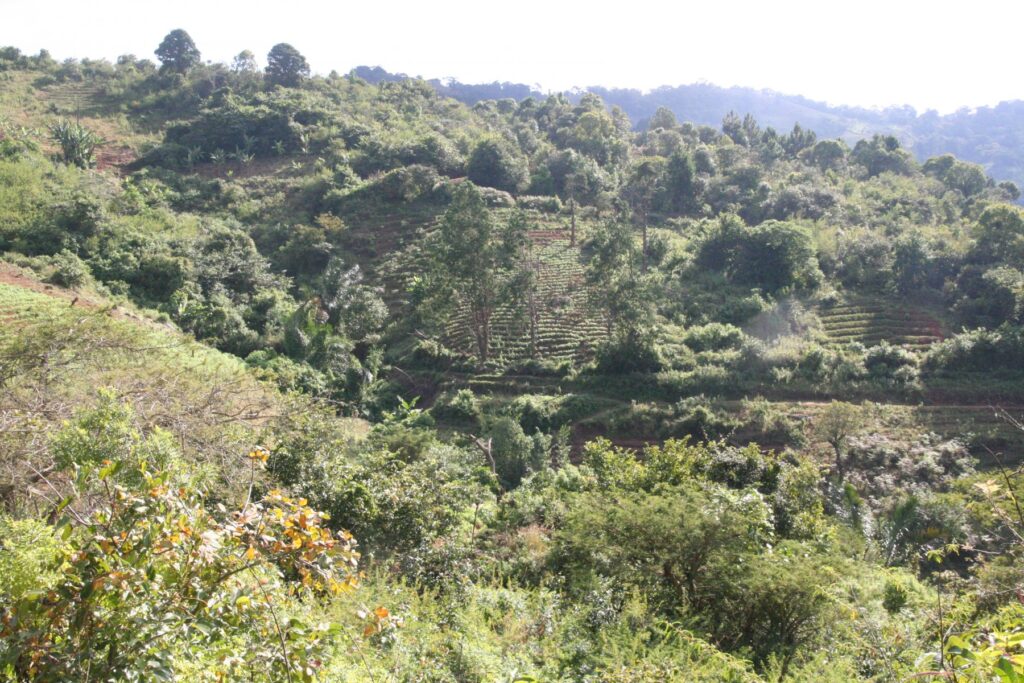Eight years in the Eastern Afromontane: a conservation milestone

The Critical Ecosystem Partnership Fund (CEPF) programme in the Eastern Afromontane biodiversity hotspot ended on 31 March 2020. We look back at some of the highlights of this programme in the past eight years.
By Elena Serra Sánchez & Lewis Kihumba
In rural Uganda, Clementine, a local Mutwa leader, is amidst a group of women planting bamboo in Echuya Forest Reserve, a Key Biodiversity Area in south western Uganda. Clementine is one of the beneficiaries of the Critical Ecosystem Partnership Fund (CEPF) funded Community Restoration of Bamboo (CORB) project, implemented by KIWOCEDU (the Kigezi Initiative for Women, Children, Empowerment, and Development- Uganda). From 2012 – 2020, CEPF ran a programme to protect biodiversity in the Eastern Afromontane biodiversity hotspot, one of the world’s 36 biodiversity hotspots.
The Eastern Afromontane biodiversity hotspot covers an area of over one million square kilometers, stretching more than 7,000 kilometers from Saudi Arabia and Yemen in the Middle East, to Zimbabwe and Mozambique in southern Africa. It encompasses Mt. Kilimanjaro, the highest mountain in Africa rising 5,895 meters above sea level, as well as expansive freshwater catchment areas and myriad terrestrial habitats.
Covering such distances and altitudes, the hotspot is home to a variety of unique ecosystems and species. Nearly 7,600 plants and 500 mammal species can be found here, of which more than 2,350 plants and 100 mammals are endemic, including the endangered Mountain Gorilla Gorilla beringei beringei. Furthermore, 1,300 bird species, out of which 110 are endemic, such as the Long-billed Forest-warbler Artisornis moreaui (Critically Endangered), found in the East Usambara Mountains in north-eastern Tanzania, and the Taita Apalis Apalis fuscigularis (Critically Endangered) ,endemic to Kenya’s Taita Hills are found in this rich biodiversity zone. The hotspot also provides numerous ecosystem services benefitting millions of people.

The region also has some of the highest poverty levels in the world, in part driven by unsustainable development models across countries. Degradation, fragmentation of habitats and unsustainable exploitation of natural resources are some of the key threats to biodiversity in the region.
It is against this background that the Critical Ecosystem Partnership Fund (CEPF) started investing in this hotspot, to enable civil society to protect their unique biodiversity. The programme was carried out in 14 countries and funded to the tune of USD 12 million, running from 2012 to 2020, with BirdLife International, supported by the Ethiopian Wildlife and Natural History Society (BirdLife Partner) and the International Union for the Conservation of Nature (IUCN), as the Regional Implementation Team (RIT). This team facilitated this investment through grants to civil society groups who implemented a range of local, national and regional projects.
A Conservation Standard
The focus of the investment was to enhance the protection of 310 Key Biodiversity Areas (KBAs) that had been identified within the region. KBAs are terrestrial, freshwater and marine ecosystems that contribute significantly to the global persistence of biodiversity. KBA classification stipulates that sites meet one or more of 11 criteria clustered info five categories namely geographically restricted biodiversity, threatened biodiversity, ecological integrity, biological processed and irreplaceability. Designation of a site as a KBA increases advocacy profiles of the site thus making a stronger case for protection of the site.

“The KBA standard is a focal point for global conservation action. It replaces, or encompasses, a number of different types of designations, and it has been very useful to have one, agreed, ‘label’ for those sites that need to be protected in the Eastern Afromontane biodiversity hotspot”, highlights Maaike Manten, the RIT leader.
As the KBA standard is a relatively new concept, RIT took the opportunity to train conservationists across the hotspot on this standard. One example of successful trainings was a two-day workshop organized by BirdLife in 2019. The workshop held in Ethiopia, brought together participants from various regions in Ethiopia. The training focused on understanding the process of proposing KBA sites, including a site monitoring session, to initiate discussions on setting up a KBA National Coordination Group in Ethiopia.
“KBA is a strong global advocacy tool for site conservation. As KBAs identify key sites for global biodiversity conservation, any threat to wildlife within a KBA will be automatically understood as a threat to global wildlife preservation. Due to the global importance placed on KBAs, stronger cases can be made for fundraising for conservation action at these sites”, explains Samuel Temidayo Osinubi, Conservation Programs Coordinator at BirdLife Africa.
“Besides, KBAs can support the strategic expansion of protected area networks by governments and civil society, and they can also serve to identify sites under international conventions, such as the Convention on Biological Diversity or the Ramsar Convention,” adds Temidayo.
Reaping The Benefits
The Misuku Hills in Malawi, were listed in the CEPF investment strategy as a priority KBA. At this KBA, a CEPF funded project implemented by the Action for Environmental Sustainability (AfES) from July 2014 to March 2017 has had a tremendous impact on forest conservation efforts. Additionally, the project has improved economic fortunes of local communities through sustainable agricultural practices and pooling of resources through formation of village banks.

“Despite the project ending, a lot of activities are still continuing to date including 25 Village Savings and Loan Associations (also known as VSLAs or village banks) with about 453 members. The village banks have positively impacted local communities’ livelihoods in many ways, for example, one group is able to save an average amount equivalent to $1110 per year. The village bank funds are then used to provide small loans to its members for starting up small scale businesses which have resulted in improved income for the members”, notes Elton Kunjirima, AfES field officer.
“These funds have been used for worthwhile activities including assisting the members’ farm inputs and equipment and also supporting orphans. Village bank members are using the loans to establish businesses including selling bananas and other farm products in addition to making sieves. The members of the village banks are also engaging in conservation activities, acting as volunteer local guards and planting trees in the village forests,” concludes Agnes Kanyika a village bank member.
Other types of conservation action at KBAs included management planning; designation as (community) protected areas; the application of safeguards such as Environmental Impact Assessments; Payment for Ecosystem Services agreements; and the development of ecotourism products. In total, 83 KBAs across 13 countries benefited from targeted conservation at activities in the Eastern Afromontane hotspot.
“The CEPF Eastern Afromontane programme is over, but this does not mean the end of conservation efforts in the hotspot. Local communities been supported and trained over the years so that they can develop sustainable conservation projects autonomously over time. I am convinced that we will see many KBAs that are better managed and protected, in the Eastern Afromontane Hotspot in coming years”, concludes Maaike.
Latest news from Africa
Stay up to date
Sign up to receive the latest bird conservation news. You’ll also receive updates about our projects, science and other ways to get involved including fundraising.
Thank you for your support, we are committed to protecting your personal information and privacy. For more information on how we use your data, please see our Privacy Policy. You can unsubscribe from emails at any time by using the link in the footer of any email from us.




